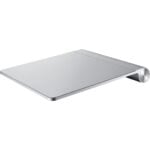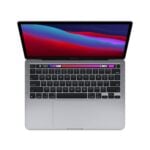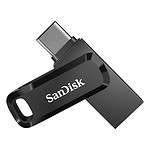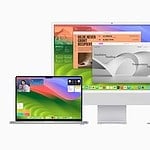Choosing between Bose and Apple headphones isn’t just about sound—it’s about lifestyle. Bose is still the king of active noise cancellation (ANC), while Apple’s AirPods Max offer unbeatable synergy within the Apple ecosystem.
With 2025 updates now in play—especially Bose’s second-gen QuietComfort Ultra Earbuds—there’s a fresh round in the premium audio rivalry. Here’s what you need to know if you’re deciding between the two.
Bose QuietComfort Ultra: Lightweight Master of Silence

Bose has doubled down on comfort and control with its QuietComfort Ultra lineup. The Ultra Headphones remain Bose’s flagship over-ear model since their late 2023 release, with a sleek, foldable design that beats the AirPods Max in terms of travel-readiness. The QC Ultra Earbuds (2nd Gen), launching in summer 2025, introduce:
- Refined adaptive ANC that better isolates voices and ambient shifts.
- Wireless charging, a long-requested feature, now included in the case.
- Improved mics for sharper calls, especially in noisy environments.
- 24-hour total battery life with the case.
- A $299 price point that undercuts most flagship earbuds.
In both form factors, Bose focuses on audio neutrality and clarity without pushing excessive bass, a trait audiophiles often appreciate.
Apple AirPods Max: Luxury Sound With Ecosystem Perks

Apple’s AirPods Max haven’t had a major refresh since their 2020 debut, aside from the USB-C port update in 2024. Still, they remain a powerhouse:
- Unmatched integration with iPhone, iPad, Mac, and Apple Watch.
- Spatial audio with head tracking, providing an immersive listening experience in Apple Music and movies.
- Top-tier build using anodized aluminum and memory foam ear cushions.
- Fantastic clarity and detail, with a natural soundstage that elevates classical, acoustic, and vocal-heavy music.
Their downside? They’re heavier, less portable, and more expensive. And with no major update expected in 2025, Bose has an opportunity to outpace them on features.
What Real Users Say
- Reddit users and audio forums frequently cite Bose’s superior comfort for long-term use, especially during work sessions or flights.
- Apple fans praise the AirPods Max for their rich sound and deep integration with iOS, but criticize their bulk and lack of foldability.
- Bose earbuds continue to earn accolades for ANC, with many reviewers placing them above Sony and Apple in noise isolation tests.
Feature Comparison Table
| Feature | Bose QC Ultra (Headphones & Earbuds) | Apple AirPods Max |
|---|---|---|
| Noise Cancellation (ANC) | Leading-class, adaptive across models | Excellent, but slightly behind Bose |
| Comfort & Portability | Lightweight, foldable, secure fit | Heavier, does not fold, more fatigue-prone |
| Battery Life | 24 hours (earbuds with case), 30–32 hrs (headphones) | ~20 hours (headphones only) |
| Sound Quality | Balanced, clear, great for travel | More dynamic, rich, especially for Apple Music |
| Wireless Charging | Yes (earbuds case, 2025 update) | No |
| Ecosystem Integration | Universal (works well with all devices) | Best for Apple users (H1 chip, spatial audio) |
| Build Quality | Premium plastic, cloth padding | Metal, memory foam—luxury feel |
| Price (approx.) | $299 (earbuds), $429 (headphones) | $549 |
Verdict: Which One Should You Choose?
- Choose Bose if you want maximum comfort, better ANC, and don’t care about Apple-exclusive perks. Their headphones are more travel-friendly and the latest Ultra earbuds are now feature-complete with wireless charging.
- Choose AirPods Max if you’re deep in the Apple ecosystem, value audio fidelity for Apple Music, and want seamless device switching, spatial audio, and premium aesthetics.
With no major AirPods Max update on the horizon, Bose is the more future-forward pick in 2025, especially if you’re platform-agnostic or Android-leaning.
Key Takeaways
- Bose headphones win on comfort and weight, making them better for long listening sessions.
- AirPods Max deliver richer sound with more clarity but at a higher weight and price point.
- Bose works well with all devices while AirPods Max integrate best with Apple products.
Brand Overview
Bose and Apple represent two leading forces in the audio industry, each bringing unique strengths to their headphone offerings while maintaining distinct brand identities.
History of Bose Headphones
Bose Corporation was founded in 1964 by MIT professor Dr. Amar Bose. The company first gained recognition for its home speaker systems before entering the headphone market.
Bose revolutionized the industry in 2000 with the release of their first QuietComfort noise-cancelling headphones, establishing themselves as pioneers in noise cancellation technology.
The QuietComfort line has seen numerous updates over the years. Each new model improved sound quality while refining the noise-cancelling technology that made them famous.
By 2023, Bose released the QuietComfort Ultra Headphones at $429, representing their most advanced offering to date. These headphones built upon decades of acoustic research and engineering.
Bose has maintained a focus on audio quality and comfort throughout their product line, earning loyal customers who appreciate these priorities.
Evolution of Apple Headphones
Apple’s journey in the headphone space began in 2001 with the simple white earbuds included with the first iPod. These basic earbuds became instantly recognizable as part of Apple’s brand identity.
The company took a major step forward in 2016 with the introduction of AirPods. These wireless earbuds quickly became a cultural phenomenon and bestseller despite initial skepticism about their design.
In 2020, Apple entered the premium over-ear headphone market with the AirPods Max, priced at $549. These headphones feature a distinctive aluminum design, memory foam ear cushions, and the H1 chip for seamless Apple ecosystem integration.
Apple has focused on creating headphones that work perfectly within their ecosystem of devices. Features like automatic device switching and spatial audio highlight this integration-first approach.
The AirPods Max represent Apple’s premium audio vision, offering rich sound quality and excellent noise cancellation while maintaining the company’s signature minimalist aesthetic.
Headphone Design and Aesthetics
Design and build quality are key differentiators when comparing Bose and Apple headphones. Each brand brings its unique approach to aesthetics, comfort, and materials.
Bose Headphone Design
Bose headphones feature a sleek, understated design that focuses on functionality. The QuietComfort Ultra headphones have a minimalist look with clean lines and a professional appearance. Many users find their design more subtle than their Apple counterparts.
Bose prioritizes lightweight construction. The Ultra headphones are approximately 40% lighter than AirPods Max, making them more comfortable for extended wear.
The ear cups have a slim profile that sits close to the head. This creates a less bulky appearance while still providing excellent noise isolation.
Most Bose models use a foldable design that allows for compact storage – a practical feature that Apple’s headphones lack.
Apple Headphone Design
Apple’s AirPods Max showcase the company’s distinctive design language with aluminum frames and minimalist aesthetics. They feature a unique stainless steel headband with a knit mesh canopy that distributes weight.
The ear cups have a distinctive flat design rather than the typical curved shape seen in most headphones. This creates a modern, eye-catching look that stands out.
Apple’s digital crown control, borrowed from the Apple Watch, provides an intuitive way to adjust volume and playback. This unique control method differs from the touch controls used by many competitors.
AirPods Max come in several eye-catching colors including silver, space gray, sky blue, pink, and green. This variety allows users to express personal style.
Material and Build Quality
Both brands use premium materials, but with different approaches. Bose uses synthetic leather for their memory foam ear pads, offering a traditional luxury feel. These materials provide good durability and comfort.
Apple opts for a tightly knit mesh textile to wrap their ear cushions. This unusual choice improves breathability but may be less durable over time than leather alternatives.
AirPods Max have a more premium construction with aluminum cups and stainless steel components. This gives them a luxurious feel but adds significant weight.
Bose focuses on lightweight materials that maintain durability. While perhaps less premium-feeling than Apple’s metal construction, many users appreciate the balance between quality and comfort.
Comfort and Fit
When choosing between Bose and Apple headphones, comfort can make or break your listening experience. The weight, materials, and design all play crucial roles in how the headphones feel during extended use.
Comfort Features in Bose Headphones
Bose QuietComfort Ultra Headphones are designed with comfort as a priority. They’re significantly lighter than their Apple counterparts—about 40% lighter according to many users. This reduced weight makes them more comfortable for long listening sessions.
The ear cups use soft padding that forms a gentle seal around the ears. This design helps with both comfort and noise isolation.
Bose’s headband distributes pressure evenly across the head, preventing the “hot spot” feeling that can develop with heavier headphones. The materials used also minimize sweating during extended wear.
Users with glasses often report better comfort with Bose models, as the ear cushions maintain their seal without pressing glasses frames uncomfortably against the head.
Ergonomics of Apple Headphones
Apple AirPods Max feature a unique mesh canopy headband that distributes weight to reduce pressure. Despite being heavier than Bose options, this design helps manage the weight effectively.
The ear cups rotate independently to match ear angle, creating a better seal. This adjustment system works well for different head shapes.
Apple’s memory foam ear cushions are magnetically attached, making them easy to replace when worn. The breathable mesh helps reduce heat buildup during long listening sessions.
Some users find the weight of AirPods Max noticeable at first, but many adapt to it over time. The premium materials contribute to the weight but also to the durability.
Comparing Ear Tips and Pads
Bose ear pads use a protein leather material that feels soft against the skin. They create a comfortable fit while maintaining good noise isolation. The pads are slightly firmer than Apple’s but still contour well to different ear shapes.
Apple’s ear cushions have a plush, pillow-like quality that many users love. The acoustically engineered memory foam creates an excellent seal while feeling gentle on the ears.
For cleaning, Bose pads can be wiped down easily, while Apple’s magnetic system allows for complete removal of ear cushions.
Bose ear pads typically last 1-2 years before needing replacement, while Apple’s may last longer but cost more to replace.
Temperature management during long sessions tends to be better with Bose, as several users report less heat buildup compared to the AirPods Max.
Audio Performance
When comparing the audio experience between Bose and Apple headphones, several key differences emerge in their sound profiles, audio technologies, and frequency handling that influence the listening experience for different types of music.
Bose Sound Signature
Bose headphones feature a balanced sound profile that many listeners find pleasing. The Bose QuietComfort Ultra headphones deliver clear audio with a slightly flatter response compared to Apple’s offerings. This makes them excellent for listeners who prefer a more neutral sound.
Bose tends to accentuate high-mids in their microphone signal, which improves vocal clarity in music and calls. Their audio processing doesn’t color the sound as much as some competitors.
For classical music and acoustic performances, Bose headphones shine with their balanced approach. Many users appreciate how Bose handles different music genres without favoring one type over another.
Apple Audio Enhancements
Apple AirPods Max delivers a richer sound profile with outstanding clarity in the high frequencies. The vocal quality and highs on AirPods Max are often described as phenomenal, though some listeners find them slightly brighter or more “tinny” than Bose.
Apple’s standout feature is their implementation of spatial audio with dynamic head tracking. This technology creates an immersive surround sound experience that makes music, movies, and games feel more three-dimensional.
The Dolby Atmos support in AirPods Max transforms compatible audio content into a theater-like experience. Apple’s computational audio adjusts sound in real-time, which helps create a more engaging listening experience that many users find impressive.
Bass and Frequency Response
In terms of bass performance, both brands have different approaches. AirPods Max delivers richer bass response that many listeners find more satisfying, especially for bass-heavy genres like hip-hop and EDM.
The frequency response curves reveal key differences. AirPods Max closely matches preference standards from bass frequencies up to 1kHz. Between 1kHz and 6kHz, however, their response diverges from the ideal curve.
Bose takes a more conservative approach to bass, offering clean low frequencies that don’t overpower mids. This makes their headphones versatile for different music styles without the bass becoming overwhelming.
Both brands handle dynamic range well, but Apple tends to add more color to the audio, while Bose aims for accuracy and neutrality across frequencies.
Noise Cancellation Technologies
Both Bose and Apple have invested heavily in noise cancellation tech, creating systems that block unwanted sounds while preserving audio quality. Their approaches differ in implementation and effectiveness across various environments.
Active Noise Cancellation in Bose
Bose stands as a pioneer in noise cancellation technology. Their QuietComfort Ultra headphones use tiny microphones to detect external sounds, then create opposite sound waves to cancel them out. This system is particularly effective against low-frequency sounds like airplane engines or air conditioners.
Bose offers multiple levels of noise cancellation, letting users adjust how much outside noise gets blocked. The technology works through:
- External microphones that monitor ambient sound
- Internal processing that creates anti-noise signals
- Continuous adjustment to changing environments
Some users report a slight “popping” sound when walking barefoot with Bose headphones, which might be a minor drawback to their otherwise excellent system.
Apple’s Approach to Noise Cancellation
Apple’s AirPods Max takes a computational approach to noise cancellation. The headphones use a combination of outward-facing and inward-facing microphones along with specialized chips to continuously adjust noise cancellation 200 times per second.
The AirPods Max noise cancellation is often praised for its natural feel. Many users don’t experience the slight pressure sensation common with other noise-canceling headphones.
Apple’s system excels in:
- Adapting quickly to changing environments
- Balancing noise reduction with audio quality
- Creating a natural listening experience
Battery impact is a consideration – the AirPods Max offers about 20 hours of playback with ANC activated, while Bose provides around 24 hours.
Ambient and Transparency Modes
Both companies offer modes that allow outside sounds in when needed. Bose calls this “Aware Mode” while Apple uses the term “Transparency Mode.”
Apple’s Transparency Mode uses the headphones’ microphones to pass external sounds through to the user’s ears. It feels remarkably natural, making conversations possible without removing the headphones.
Bose’s Aware Mode similarly lets in ambient noise but adds “ActiveSense” technology that:
- Automatically adjusts when loud noises occur
- Maintains awareness of surroundings
- Balances environmental sounds with your audio
These features are crucial for safety when walking in traffic or when needing to hear announcements. Both systems work well, though some users find Apple’s implementation slightly more natural-sounding.
Battery Life and Charging
Battery performance and charging options are key factors when choosing between Bose and Apple headphones. Both brands offer distinct advantages in how long they last and how you power them up.
Bose Headphone Battery Endurance
The Bose QuietComfort Ultra headphones deliver impressive battery life. They offer up to 24 hours of listening time on a single charge. This drops to about 18 hours when using the immersive audio feature.
For daily use, this means:
- Nearly a full day of continuous listening
- Multiple days for average commuters
- Enough power for long-haul flights
The QuietComfort Ultra uses a USB-C port for charging, which is now the standard for most modern devices. This makes it convenient when traveling with other USB-C devices.
Quick charging is also available. A 15-minute charge provides several hours of playback, perfect for those times when you’re in a hurry.
Apple Headphone Battery Performance
Apple’s AirPods Max offer up to 20 hours of battery life with Active Noise Cancellation enabled. While this is slightly less than Bose’s offering, the difference is minimal for most users.
The AirPods Max have a unique advantage: they can be used while charging. This feature lets you continue listening even when the battery is low.
Power management in the AirPods Max is quite efficient. Apple’s integration with iOS devices provides accurate battery level indicators and smart power-saving features.
One drawback is the Lightning port rather than USB-C. This means carrying an extra cable if your other devices use USB-C.
Charging Cases and Methods
Both headphones take different approaches to their cases and charging methods:
Bose QuietComfort Ultra:
- Traditional hard case that fully protects the headphones
- Requires manual charging via USB-C cable
- Case does not provide additional battery charges
AirPods Max:
- Slim “Smart Case” that puts headphones in ultra-low power mode
- Does not provide additional charges
- Can charge while in use
Neither headphone comes with a charging brick in the box. Users need to supply their own wall adapter or charge from a computer USB port.
Fast charging capabilities are available on both models. The Bose requires about 2.5 hours for a full charge, while AirPods Max need roughly 2 hours.
Connectivity and Controls
When choosing between Bose and Apple headphones, how they connect to your devices and the way you control them can make a big difference in daily use. Both brands offer distinct approaches to wireless technology and user interface.
Bluetooth and Wireless Performance
Bose QuietComfort Ultra Headphones use Bluetooth 5.3, which is more advanced than Apple’s AirPods Max with Bluetooth 5.0. This newer Bluetooth version in Bose headphones provides better range and stability when connecting to devices.
Connection speed differs between the brands. The AirPods Max connect almost instantly to Apple devices thanks to the H1 chip. Bose headphones typically take around 4 seconds to connect, which might feel slow if you’re switching between devices often.
Both headphones maintain stable connections once paired. Bose’s multipoint technology lets users connect to two devices simultaneously, useful for people who work on a laptop while taking calls on their phone.
Ease of Controls on Bose and Apple
The control systems on these headphones show clear differences in philosophy. Bose QuietComfort Ultra uses a combination of touch panels and physical buttons, offering both tactile feedback and gesture controls.
A multi-function button on the Bose handles many commands. For example, triple tapping lets you skip back to the previous track.
Apple takes a different approach with the AirPods Max. They feature a Digital Crown (similar to the Apple Watch) for volume adjustment and playback control. This provides precise control with a physical dial that many users find intuitive.
The noise cancellation control is simpler on AirPods Max with just one button, while Bose offers more customization options through their app.
Integration with Apple Devices
AirPods Max shine brightest in the Apple ecosystem. They pair instantly with iPhones, iPads, and Macs, with seamless switching between devices. The setup process is almost magical—just hold them near your iPhone and follow the on-screen instructions.
Features like spatial audio with head tracking, automatic device switching, and “Hey Siri” voice commands work exclusively with Apple devices. Audio sharing between two AirPods is another Apple-only benefit.
Bose headphones work well with Apple products but lack the deep integration. They connect like standard Bluetooth headphones, which means more manual switching between devices.
The Bose Music app works on both iOS and Android, offering more platform flexibility than AirPods Max. This makes Bose a better choice for Android users or those who use multiple operating systems.
Additional Features and Accessories
Both Apple and Bose headphones offer special features beyond basic sound quality that enhance the user experience. These include software customization, spatial audio capabilities, and personalization options that can significantly impact your listening experience.
Companion Apps and Equalizers
The Bose Music app provides a clean interface for managing QuietComfort Ultra settings. Users can adjust noise cancellation levels, create custom EQ profiles, and manage multiple device connections.
Apple’s approach differs with no traditional equalizer. Instead, the AirPods Max uses Adaptive EQ that automatically tunes sound based on fit and seal. This works through the iOS settings rather than a dedicated app.
Bose offers more manual control with its customizable EQ bands. This lets users fine-tune their audio experience to personal preferences.
Connection management is simpler with AirPods Max for Apple users. The automatic device switching between Apple products happens seamlessly, while Bose requires manual switching through the app.
Battery information, firmware updates, and user guides are accessible through both ecosystems’ apps.
Head Tracking and Immersive Audio
Apple’s AirPods Max features dynamic head tracking that adjusts audio based on head movement. This creates a theater-like experience where sounds stay fixed in virtual space as you turn your head.
Bose QuietComfort Ultra also offers Immersive Audio with head tracking capabilities. The system creates spatial awareness that works with music, movies, and calls.
The implementation differs slightly between brands. Apple’s system integrates deeply with Apple TV and supported iOS apps. Bose’s solution works across more platforms but may lack the same level of ecosystem integration.
Both systems use gyroscopes and accelerometers to track head position. The effect is most noticeable when watching movies or playing games, creating a more immersive experience.
Users can disable head tracking on both headphones when the feature isn’t needed to save battery life.
Customization Options
The AirPods Max offers five color options: space gray, silver, green, pink, and sky blue. Physical buttons include a Digital Crown for volume and playback controls and a noise control button.
Bose QuietComfort Ultra comes in Black, White Smoke, and Blue. The touch controls on the earcup let users manage calls, volume, and playback with swipes and taps.
Button customization differs between models. Apple limits reprogramming options while Bose allows users to set preferred functions for certain controls through the Bose Music app.
Both headphones offer voice assistant access. AirPods Max provides seamless Siri integration, while Bose supports multiple assistants including Google Assistant and Amazon Alexa.
Neither headphone offers replaceable ear cushions, though both brands sell replacement parts separately when wear occurs.
Usage Scenarios
Both Bose and Apple headphones excel in different situations, with each offering unique advantages depending on what you’re doing and where you’re using them.
For Music and Podcasts
When it comes to music, the AirPods Max delivers richer sound with more clarity compared to Bose models. The bass response on the AirPods Max tends to be more defined, which makes them great for genres like hip-hop and electronic music.
Bose headphones offer a slightly flatter sound profile that many audiophiles prefer for accurate music reproduction. This makes them excellent for listening to classical music or podcasts where voice clarity matters most.
Both brands handle podcasts well, but Bose’s comfort edge makes them better for marathon listening sessions. Many users find they can wear Bose QuietComfort models for hours without discomfort.
For commuters, both options provide excellent isolation from outside noise. The noise cancellation on newer AirPods models rivals or sometimes exceeds Bose, particularly for constant low-frequency noises like airplane engines.
Experience with Movies and Spatial Audio
Apple’s headphones truly shine with movies thanks to their Spatial Audio feature. This technology creates a virtual surround sound experience that makes viewers feel like they’re in a theater. When watching action movies, the directional audio follows head movements, enhancing the immersion.
Bose offers solid movie performance with balanced audio that makes dialogue clear and easy to understand. While they lack Apple’s Spatial Audio feature, many users still find the cinematic experience engaging due to their excellent sound isolation.
For home theater setups, AirPods Max integrates seamlessly with Apple TV and other Apple devices. This creates a convenient ecosystem for movie lovers who already use Apple products.
Battery life becomes important during long viewing sessions. The Bose QuietComfort models last nearly 25 hours on a single charge, while AirPods Max typically offers around 20 hours. This gives Bose a slight advantage for binge-watching series or movie marathons.
Call Quality and Professional Use
For professional calls and video conferences, both brands perform admirably. The AirPods Max features multiple microphones that filter out background noise effectively, making them excellent for busy office environments or calls from coffee shops.
Bose headphones are often preferred in professional settings due to their more understated design and excellent comfort for long wear. Their microphone quality is consistently good, though some users report that Apple’s beam-forming mics produce slightly clearer voice pickup.
For travel professionals, considerations include:
- Portability: Bose headphones fold flat and come with compact cases
- Battery life: Bose edges out Apple for all-day use
- Connectivity: Apple offers more seamless switching between Apple devices
Price plays a role in professional decisions as well. At $549, AirPods Max costs significantly more than Bose’s QuietComfort Ultra at $429. This price difference might influence company purchasing decisions for employee equipment.
Comparison Summary
The Bose QuietComfort Ultra and Apple AirPods Max each excel in different areas that matter to headphone buyers. Their strengths and weaknesses create distinct value propositions that appeal to different types of users.
Overall Value Proposition
Bose QuietComfort Ultra headphones offer superior comfort due to their lightweight design, making them better for extended wearing periods. They shine in noise cancellation, particularly for constant background noises like airplane engines.
The AirPods Max stand out with their richer sound profile and premium build quality. The aluminum construction feels more luxurious but adds weight.
Battery life favors the Bose with up to 24 hours, while Apple offers around 20 hours between charges.
For Apple users, the AirPods Max provide seamless integration with other Apple devices. This ecosystem advantage creates value that transcends hardware specifications alone.
Bose offers more universal compatibility across different devices and operating systems.
Price to Performance Evaluation
The AirPods Max come with a significantly higher price tag but deliver exceptional sound clarity and build quality. The aluminum construction and knit mesh headband justify some of the cost premium.
Bose QuietComfort Ultra headphones provide better value for noise cancellation features and comfort. They cost less while still delivering premium audio quality that satisfies most listeners.
For voice calls, both perform excellently, with clear voice capture in good conditions. The Bose emphasizes high-mids for vocal clarity, while Apple takes a brighter approach.
The cost difference becomes harder to justify for Android users, as they miss out on the Apple ecosystem benefits that add value to the AirPods Max.
Frequently Asked Questions
Many shoppers compare Bose and Apple headphones when looking for premium audio gear. These questions cover key differences in sound, features, and comfort between these popular brands.
What are the main differences in sound quality between Bose and Apple headphones?
Bose headphones typically offer a more balanced sound profile with slightly emphasized bass. Apple’s AirPods Max provide a more neutral sound signature with excellent clarity in the mid-range.
Both brands deliver premium sound quality, but Bose often focuses on a warm, rich sound while Apple aims for accuracy and detail reproduction. Both capture your voice well during calls, with speech sounding close to accurate in ideal conditions.
How do Bose headphones compare with Apple AirPods Pro in terms of noise cancellation features?
Bose has long been an industry leader in noise cancellation technology. Their latest QuietComfort Ultra headphones provide exceptional noise blocking that rivals Apple’s offerings.
The ANC performance is often considered a tie between the two brands, though some users report Bose headphones occasionally produce popping sounds during specific movements. Both excel at blocking constant low-frequency noises like airplane engines.
Which brand offers better battery life and connectivity with Apple devices, Bose or Apple?
Apple headphones integrate seamlessly with other Apple devices through features like automatic switching and spatial audio. Bose offers solid connectivity but lacks the specialized Apple ecosystem integration.
Battery life varies between models, but generally, both brands offer 20+ hours of playback. A key difference is charging: Bose uses standard USB-C cables while Apple relies on Lightning to USB-C, making Bose more universal for charging options.
How does the comfort and fit of Bose QuietComfort headphones stack up against Apple AirPods Max?
The Bose QuietComfort series lives up to its name with plush ear cushions and lightweight design meant for extended wear. Many users find them more comfortable for long listening sessions.
Apple AirPods Max feature a unique mesh headband and memory foam ear cups that distribute weight evenly. However, they weigh more than Bose models. Some users report finding Bose more comfortable than AirPods Max despite Apple’s premium materials.
Are there any significant benefits to using Bose headphones with Apple products over Apple’s own headphones?
Bose headphones work well across multiple platforms and operating systems, making them more versatile if you use both Apple and non-Apple devices. They also tend to be more affordable than AirPods Max.
With Bose, you get multi-point connectivity to connect to two devices simultaneously. This feature is useful for people who switch between their iPhone and Windows PC frequently.
In user reviews, how do Bose headphones typically fare against Apple headphones in terms of overall satisfaction?
Users consistently praise Bose for comfort, noise cancellation, and value. Apple receives high marks for sound quality, build materials, and ecosystem integration.
Price often influences satisfaction ratings, with both brands earning five-star reviews but Bose sometimes scoring higher on value. Long-term durability experiences vary, with some users reporting that the simpler Bose design holds up better over years of use.







